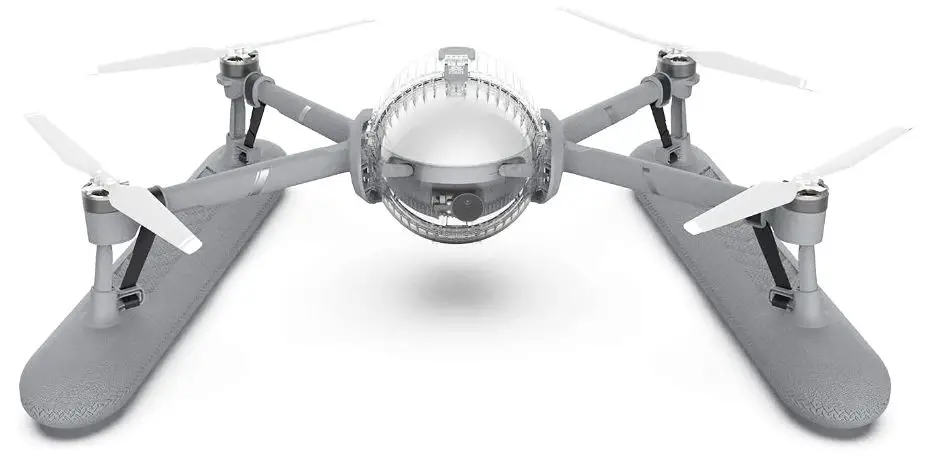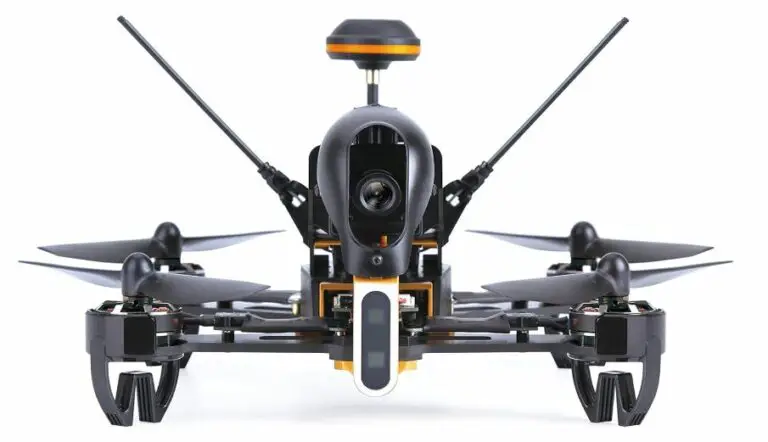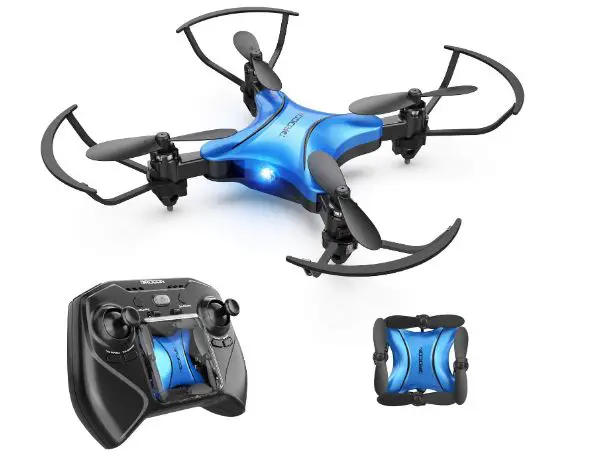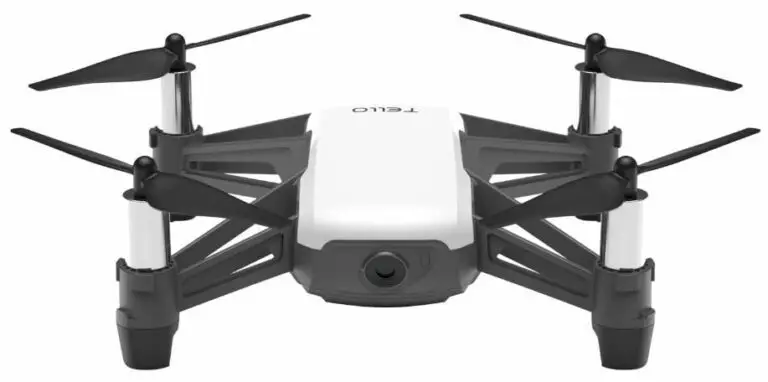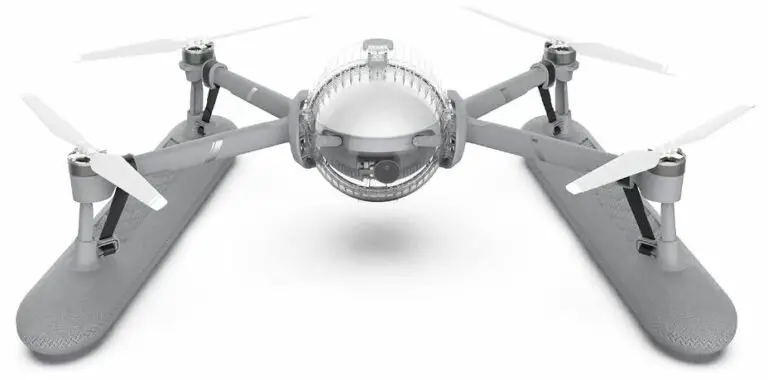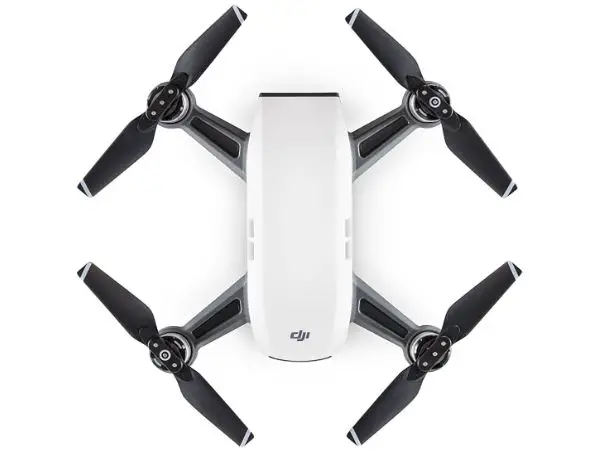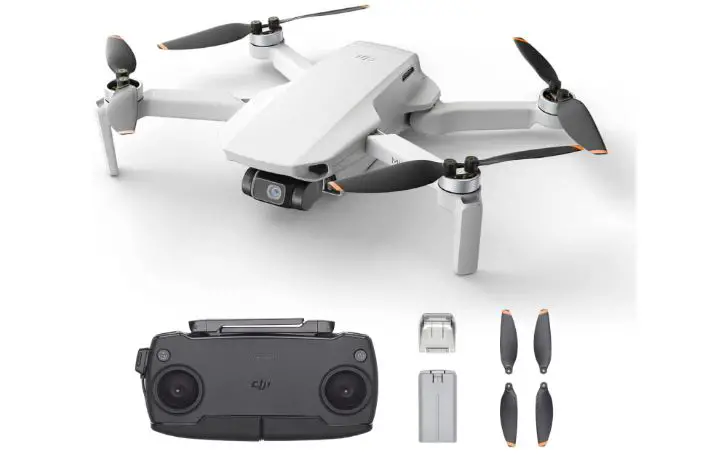First Time Flying a Drone? Don’t Make These Mistakes
Introduction
Welcome to the world of drone flying! Flying a drone for the first time can be an exhilarating experience, but it’s important to approach it with caution and responsibility. This guide is designed to help you navigate your first drone flight safely and confidently.
Drones, also known as unmanned aerial vehicles (UAVs), have become increasingly popular for recreational, photography, videography, and even commercial purposes. However, flying a drone requires more than just unpacking it and pressing a few buttons. It requires knowledge, skill, and adherence to safety guidelines to ensure a successful and enjoyable flying experience.
In this guide, we’ll cover everything you need to know as a beginner drone pilot, from understanding your drone and pre-flight preparation to basic flying techniques, safety guidelines, and post-flight procedures. Whether you’re a hobbyist looking to capture stunning aerial footage or a professional seeking to incorporate drones into your work, this guide will provide you with the foundational knowledge and skills to get started.
Before you take to the skies with your drone, it’s essential to familiarize yourself with the basics of drone operation, safety protocols, and local regulations. By doing so, you’ll not only protect yourself and others but also maximize your enjoyment of flying your drone.
So, let’s dive in and embark on this exciting journey of learning and exploration into the world of drone flying!
Understanding Your Drone
Before you take your drone for its first flight, it’s crucial to have a solid understanding of its components, features, and functionalities. This section will cover the basics of drones, including the different types, basic parts and components, and how to operate them.
- Types of Drones:
- Drones come in various types, each designed for specific purposes:
- Quadcopters: The most common type of drone, featuring four rotors arranged in a square configuration.
- Hexacopters and Octocopters: Drones with six or eight rotors, offering increased stability and payload capacity.
- Fixed-Wing Drones: Drones with wings like traditional airplanes, designed for longer flight times and aerial mapping.
- Hybrid Drones: Combining features of quadcopters and fixed-wing drones for versatility in flight.
- Drones come in various types, each designed for specific purposes:
- Basic Parts and Components:
- Frame: The main body of the drone that houses the electronic components and provides structural support.
- Motors and Propellers: Electric motors that power the propellers to generate thrust and lift.
- Flight Controller: The onboard computer that controls the drone’s flight dynamics and stability.
- Battery: Provides power to the drone’s electronic systems and motors.
- Remote Controller: Handheld device used to control the drone’s flight and camera (if equipped).
- Gimbal: Mechanism that stabilizes and controls the orientation of the camera for smooth footage.
- Camera (optional): Mounted on the drone for capturing photos and videos from the air.
- GPS Module (optional): Provides location data for autonomous flight and navigation.
- Controller Functions:
- Throttle: Controls the drone’s altitude and vertical movement.
- Pitch and Roll: Control the drone’s forward, backward, left, and right movements.
- Yaw: Controls the drone’s rotation or heading.
- Trim Controls: Adjust the drone’s stability and level flight.
- Mode Switches: Switch between different flight modes, such as GPS mode, manual mode, and return-to-home mode.
- Camera Controls (if equipped): Adjust camera settings, capture photos, and start/stop video recording.
Understanding these basic parts and functions of your drone is essential for safe and effective operation. Before you take your drone for its first flight, familiarize yourself with the controls and practice basic maneuvers in a controlled environment. This will help you build confidence and proficiency as a drone pilot.
Pre-Flight Preparation
Proper pre-flight preparation is essential for a safe and successful drone flight. This section covers the steps you should take before launching your drone into the air:
- Read the User Manual:
- Familiarize yourself with the user manual provided by the manufacturer. Pay close attention to instructions regarding assembly, operation, and safety guidelines specific to your drone model.
- Register Your Drone (if required):
- Depending on your country’s regulations, you may need to register your drone with the appropriate aviation authority before flying it. Check the registration requirements and ensure compliance to avoid legal issues.
- Choose a Suitable Flying Location:
- Select an open and spacious area for your drone flight, away from obstacles such as trees, buildings, power lines, and people.
- Ensure that the flying location allows for safe takeoff, flight, and landing without interference or obstruction.
- Check Weather Conditions:
- Monitor weather conditions and forecasts before planning your drone flight. Avoid flying in strong winds, rain, fog, or adverse weather conditions that may compromise flight safety and visibility.
- Choose a day with calm winds, clear skies, and good visibility for optimal flying conditions.
- Inspect Your Drone:
- Conduct a thorough pre-flight inspection of your drone to ensure that all parts and components are in good working condition.
- Check for any signs of damage, wear, or loose connections in the frame, motors, propellers, and electronic components.
- Verify that the battery is fully charged and securely installed in the drone.
- Check Remote Controller and Batteries:
- Inspect the remote controller for any damage or malfunction. Ensure that the control sticks, switches, and buttons are functioning properly.
- Check the batteries in the remote controller and ensure they are fully charged or replaced with fresh batteries as needed.
- Plan Your Flight Path:
- Plan your intended flight path and areas of interest for capturing photos or videos. Consider factors such as landmarks, scenery, and safety considerations when planning your flight route.
- Identify any restricted airspace, no-fly zones, or flight restrictions in your area and avoid flying in prohibited areas.
- Safety Equipment and Accessories:
- Wear appropriate safety gear such as safety glasses, gloves, and closed-toe shoes when handling and flying your drone.
- Carry essential accessories such as spare batteries, propellers, tools, and first aid kit in case of emergencies or equipment failures.
By following these pre-flight preparation steps, you can ensure that your drone flight is safe, successful, and enjoyable. Proper planning and attention to detail will help minimize risks and maximize the enjoyment of your drone flying experience.
Safety Guidelines
Flying a drone safely is paramount to protect yourself, others, and property. Here are essential safety guidelines to follow before and during your drone flight:
- Know and Follow Local Regulations:
- Familiarize yourself with the drone regulations and airspace rules in your area. Adhere to laws and regulations set by aviation authorities, such as the Federal Aviation Administration (FAA) in the United States or the Civil Aviation Authority (CAA) in the UK.
- Check for any restrictions on flying drones in specific areas, such as near airports, government buildings, or crowded events.
- Conduct Pre-Flight Safety Checks:
- Before each flight, inspect your drone for any signs of damage, wear, or loose components. Ensure that all parts and components are in good working condition.
- Check the battery level and ensure it is fully charged before taking off. Avoid flying with a low battery to prevent sudden power loss during flight.
- Maintain Line of Sight:
- Keep your drone within visual line of sight (VLOS) at all times during flight. Avoid flying beyond your line of sight or obstructed by obstacles, buildings, or trees.
- Use spotters or observers to help maintain visual contact with the drone, especially during long-distance flights or in areas with limited visibility.
- Avoid No-Fly Zones:
- Stay clear of restricted airspace, no-fly zones, and sensitive areas such as airports, military installations, and government facilities.
- Use airspace maps and mobile apps to identify restricted areas and plan your flight route accordingly.
- Respect Privacy and Property:
- Respect the privacy of individuals and property owners when flying your drone. Avoid flying over private property without permission or capturing images of people without their consent.
- Maintain a safe distance from people, vehicles, buildings, and animals to prevent accidents and intrusions on privacy.
- Fly Responsibly and Ethically:
- Fly your drone responsibly and considerately, taking into account the safety and well-being of others.
- Avoid reckless flying behavior, such as flying too close to people or animals, flying at excessive speeds, or performing dangerous maneuvers in crowded areas.
- Be Mindful of Weather Conditions:
- Check weather forecasts and monitor current weather conditions before flying your drone. Avoid flying in strong winds, rain, fog, or adverse weather conditions that may affect flight stability and safety.
- Be aware of changing weather conditions during flight and land your drone immediately if weather conditions deteriorate.
- Emergency Procedures:
- Be prepared for emergencies and know how to respond to unexpected situations such as loss of control, loss of GPS signal, or low battery warning.
- Have a plan for emergency landing locations and procedures to safely land your drone in case of emergencies.
By following these safety guidelines, you can minimize risks and ensure a safe and responsible drone flying experience. Prioritize safety at all times and fly your drone in a manner that respects the well-being of others and the environment.
Basic Flying Techniques
Mastering basic flying techniques is essential for controlling your drone safely and effectively. Here are some fundamental flying techniques to help you get started:
- Throttle Control:
- The throttle control adjusts the drone’s altitude or vertical movement. Pushing the throttle stick up increases altitude, while pulling it down decreases altitude.
- Practice maintaining a steady altitude by making small adjustments to the throttle stick.
- Pitch and Roll:
- Pitch controls the drone’s forward and backward movements, tilting the drone’s nose up or down. Pushing the pitch stick forward moves the drone forward, while pulling it back moves the drone backward.
- Roll controls the drone’s left and right movements, tilting the drone’s body from side to side. Pushing the roll stick to the left moves the drone to the left, while pushing it to the right moves the drone to the right.
- Practice smooth and coordinated movements of pitch and roll to maneuver the drone accurately and avoid overcorrections.
- Yaw Control:
- Yaw controls the drone’s rotation or heading, allowing it to turn left or right. Rotating the yaw stick to the left turns the drone counterclockwise, while rotating it to the right turns the drone clockwise.
- Practice yaw control to change the drone’s direction and orientation while maintaining stability and balance in flight.
- Hovering:
- Hovering is the ability to hold the drone in a stable position without drifting or moving. Achieving a stable hover requires precise control of throttle, pitch, roll, and yaw.
- Practice maintaining a stable hover by making small adjustments to the controls to counteract any drift or movement caused by wind or air currents.
- Altitude Control:
- Mastering altitude control is essential for maintaining a safe flying height and avoiding collisions with obstacles or the ground.
- Practice ascending and descending smoothly by adjusting the throttle stick while maintaining stability and control over the drone’s movements.
- Flight Modes:
- Familiarize yourself with the different flight modes available on your drone, such as GPS mode, attitude mode, and sport mode.
- Experiment with different flight modes to understand their effects on flight characteristics, responsiveness, and stability.
- Practice, Practice, Practice:
- Practice flying your drone in an open and spacious area free of obstacles or hazards. Start with simple maneuvers and gradually increase the complexity as you gain confidence and proficiency.
- Experiment with different control inputs and flight patterns to develop your flying skills and improve your overall control and coordination.
By mastering these basic flying techniques and practicing regularly, you’ll become a more confident and skilled drone pilot capable of navigating your drone safely and effectively in various flying conditions. Remember to always prioritize safety and adhere to local regulations and guidelines while flying your drone.
Understanding Flight Modes
Flight modes on drones offer different levels of control and functionality to suit various flying scenarios. Understanding these modes is crucial for maximizing your drone’s capabilities and ensuring safe and efficient flight. Here’s an overview of common flight modes:
- GPS Mode:
- GPS mode utilizes the drone’s GPS (Global Positioning System) to maintain position hold and stability. It provides accurate positioning and enables features such as return-to-home and autonomous waypoint navigation.
- In GPS mode, the drone uses satellite signals to hold its position and altitude, making it ideal for stable hovering, aerial photography, and autonomous flight.
- This mode is recommended for beginners as it offers enhanced stability and ease of control, especially in outdoor environments with minimal wind.
- Attitude Mode:
- Attitude mode, also known as altitude hold or manual mode, allows the drone to maintain a constant altitude while the pilot controls its orientation and movement.
- In attitude mode, the drone does not use GPS for position hold, relying instead on onboard sensors to stabilize and maintain altitude. It offers more manual control over the drone’s flight dynamics.
- This mode is suitable for experienced pilots who prefer more responsive and agile flight characteristics, such as aerial acrobatics or flying in confined spaces where GPS signals may be weak or unavailable.
- Sport Mode:
- Sport mode, also known as manual mode or agility mode, unlocks the drone’s maximum speed and agility for high-performance flying.
- In sport mode, the drone’s flight controls are more responsive, allowing for faster acceleration, sharper turns, and dynamic maneuvering.
- This mode is ideal for experienced pilots looking to push the limits of their drone’s performance, such as racing or capturing fast-moving subjects.
- Return-to-Home (RTH) Mode:
- Return-to-home mode is a safety feature that automatically returns the drone to its takeoff point if it loses connection with the remote controller or encounters low battery.
- When activated, the drone will ascend to a preset altitude, fly back to its home point using GPS coordinates, and land safely or hover until further instructions are given.
- This mode provides peace of mind and helps prevent loss or damage to the drone in case of signal loss or other emergencies.
- Follow Me Mode:
- Follow me mode enables the drone to autonomously track and follow a moving subject, such as a person or vehicle, while maintaining a constant distance and altitude.
- The drone uses GPS or visual tracking to lock onto the subject and adjust its position and speed to keep pace with the moving target.
- This mode is useful for capturing dynamic footage of outdoor activities such as hiking, biking, or sports events, where manual control of the drone may be impractical.
Understanding these flight modes and their respective functionalities will allow you to leverage the full capabilities of your drone and adapt to different flying scenarios with confidence and precision. Always familiarize yourself with your drone’s specific flight modes and practice using them in a controlled environment before attempting more advanced maneuvers or autonomous flights.
Capturing Great Footage
Capturing stunning aerial footage with your drone requires a combination of technical skill, creativity, and careful planning. Here are some tips to help you capture great footage with your drone:
- Plan Your Shots:
- Before taking off, plan your shots and visualize the scenes you want to capture. Consider factors such as composition, lighting, and camera angles to create visually appealing footage.
- Use storyboarding or shot lists to organize your ideas and ensure that you capture all the shots you need for your project.
- Use Manual Camera Settings:
- Familiarize yourself with your drone’s camera settings and learn how to adjust parameters such as shutter speed, ISO, aperture, and white balance manually.
- Experiment with different settings to achieve the desired exposure, depth of field, and motion blur for your shots, depending on lighting conditions and the creative look you want to achieve.
- Utilize Camera Movement:
- Add dynamic movement to your shots by incorporating camera movements such as pans, tilts, and orbits. Use the drone’s gimbal and flight controls to smoothly move the camera and create cinematic effects.
- Experiment with different camera movements to add depth and dimension to your footage and create engaging visual storytelling.
- Focus on Composition:
- Apply the principles of composition, such as the rule of thirds, leading lines, and symmetry, to create visually balanced and appealing shots.
- Experiment with different framing and perspectives to capture unique angles and viewpoints that showcase the subject or scenery in an interesting way.
- Consider Lighting Conditions:
- Pay attention to lighting conditions when capturing aerial footage. Optimal lighting, such as golden hour (early morning or late afternoon), can enhance the mood and atmosphere of your shots.
- Adjust camera settings and flight trajectory to take advantage of natural light and avoid harsh shadows or overexposure.
- Capture Dynamic Shots:
- Capture dynamic shots that showcase the movement and scale of your subject or environment. Experiment with aerial tracking shots, flyovers, and reveals to create dramatic and immersive footage.
- Incorporate elements of motion and action into your shots to add excitement and energy to your videos.
- Edit and Post-Process Footage:
- After capturing footage, edit and post-process your clips using video editing software to enhance colors, contrast, and clarity, and add transitions, effects, and music to create a polished final product.
- Use editing techniques such as color grading, stabilization, and speed ramping to fine-tune your footage and bring your creative vision to life.
By applying these tips and techniques, you can elevate your drone footage to new heights and capture breathtaking aerial imagery that captivates and inspires viewers. Remember to practice regularly, experiment with different shooting techniques, and always prioritize safety and compliance with drone regulations while flying.
Dealing with Emergencies
While flying your drone, unexpected emergencies or issues may arise. Being prepared and knowing how to respond can help mitigate risks and prevent accidents. Here’s how to handle common drone emergencies:
- Loss of Signal:
- If you lose signal between your remote controller and the drone:
- Remain calm and avoid panicking.
- Activate the return-to-home (RTH) function on your remote controller if available. This will prompt the drone to automatically return to its takeoff point.
- If RTH is not available or not working, try to regain control by moving closer to the drone or adjusting the position of the remote controller antenna.
- If all else fails, continue monitoring the drone’s last known location and attempt to re-establish the connection once you’re in range.
- If you lose signal between your remote controller and the drone:
- Low Battery Warning:
- If you receive a low battery warning during flight:
- Immediately land the drone in a safe and controlled manner.
- Avoid flying the drone too far or too high when the battery is low to prevent it from falling out of the sky.
- If necessary, activate the return-to-home (RTH) function to initiate a safe return to the takeoff point before the battery is depleted.
- If you receive a low battery warning during flight:
- Loss of Control:
- If you lose control of the drone or it behaves erratically:
- Release the control sticks and allow the drone to hover or stabilize on its own.
- Try to regain control by reducing throttle and gently adjusting pitch, roll, and yaw inputs.
- If the drone continues to fly unpredictably or poses a safety risk, initiate an emergency landing by descending to the ground as quickly and safely as possible.
- If you lose control of the drone or it behaves erratically:
- Flyaway:
- In the event of a flyaway, where the drone becomes unresponsive and drifts away:
- Immediately activate the return-to-home (RTH) function on your remote controller.
- Monitor the drone’s flight path and attempt to regain control or redirect it back to the takeoff point.
- If RTH fails to bring the drone back, try to track its location visually or using GPS tracking apps to aid in recovery efforts.
- In the event of a flyaway, where the drone becomes unresponsive and drifts away:
- Crash Landing:
- If your drone is heading towards a crash landing:
- Assess the situation and try to steer the drone away from obstacles or hazards.
- Reduce throttle and gently guide the drone towards a safe landing spot, such as an open area away from people and property.
- Avoid abrupt movements or aggressive maneuvers that may exacerbate the crash or cause further damage to the drone.
- If your drone is heading towards a crash landing:
- Emergency Landing:
- In case of an emergency, where the drone is no longer controllable or is experiencing critical issues:
- Initiate an emergency landing by descending the drone to the ground in a controlled manner.
- Choose a landing spot away from people, vehicles, and obstacles to minimize the risk of injury or damage.
- Power down the drone and inspect it for damage or malfunctions before attempting to fly again.
- In case of an emergency, where the drone is no longer controllable or is experiencing critical issues:
By being prepared and knowing how to respond to emergencies, you can effectively mitigate risks and ensure the safety of yourself, others, and your drone during flight. Regular practice, adherence to safety protocols, and familiarity with your drone’s features and functions will help you handle emergencies with confidence and composure.
Post-Flight Procedures
After completing your drone flight, it’s essential to follow proper post-flight procedures to ensure the safety of your drone, preserve its longevity, and maintain compliance with regulations. Here’s a checklist of post-flight procedures to consider:
- Land Safely:
- Carefully maneuver the drone to a safe landing spot away from people, obstacles, and hazards.
- Use gentle throttle inputs to land the drone smoothly and avoid abrupt movements that could damage the landing gear or propellers.
- Power Down the Drone:
- Once safely landed, power down the drone by turning off the motors and disconnecting the battery.
- Follow the manufacturer’s instructions for proper shutdown procedures to prevent damage to the drone’s electronics and components.
- Secure and Stow Equipment:
- Securely fasten any loose components or accessories, such as propeller guards, landing gear, or camera gimbal, before stowing the drone in its carrying case or storage bag.
- Ensure that the remote controller and any other accessories are powered off and properly stowed to prevent damage during transport.
- Inspect the Drone:
- Conduct a visual inspection of the drone to check for any signs of damage, wear, or malfunction.
- Inspect the frame, motors, propellers, landing gear, and other components for cracks, dents, loose connections, or debris that may affect performance or safety.
- Download Footage:
- If you captured photos or videos during your flight, download the footage from the drone’s onboard storage or memory card to your computer or mobile device.
- Backup the footage to a secure location to prevent loss or corruption of data.
- Review Flight Data:
- Review flight data and logs recorded by the drone’s flight controller or companion app. Analyze flight performance, altitude, speed, and other metrics to assess your flying skills and identify areas for improvement.
- Recharge Batteries:
- Recharge the drone’s batteries using the manufacturer’s recommended charging method and equipment.
- Ensure that the batteries are properly seated and securely connected to the charger to prevent overheating or damage during charging.
- Clean and Maintain:
- Clean the drone’s exterior surfaces, propellers, and camera lens using a soft brush, microfiber cloth, or compressed air to remove dirt, dust, and debris.
- Perform routine maintenance tasks such as tightening screws, lubricating moving parts, and inspecting the drone’s components for wear and tear.
- Store Properly:
- Store the drone and its accessories in a cool, dry, and dust-free environment to prevent damage from moisture, humidity, or environmental contaminants.
- Use a protective carrying case or storage bag to transport and store the drone safely when not in use.
By following these post-flight procedures, you can ensure that your drone remains in optimal condition, ready for your next flight adventure. Regular maintenance, careful handling, and proper storage will help prolong the lifespan of your drone and maximize its performance and reliability over time.
Troubleshooting and Maintenance
To ensure your drone remains in optimal condition and operates reliably, it’s important to perform regular maintenance and troubleshoot any issues that may arise. Here are some troubleshooting steps and maintenance tips to keep your drone in top shape:
- Routine Inspections:
- Conduct regular visual inspections of your drone before and after each flight. Check for any signs of damage, wear, or loose components, including the frame, motors, propellers, landing gear, and electronic connections.
- Propeller Check:
- Inspect the propellers for any signs of damage, such as cracks, bends, or chips. Replace damaged propellers immediately to ensure safe and efficient flight.
- Ensure that the propellers are securely fastened to the motors and rotate freely without obstruction.
- Battery Maintenance:
- Follow proper battery maintenance practices to prolong the lifespan and performance of your drone’s batteries.
- Store batteries in a cool, dry place at the recommended storage voltage to prevent degradation and prolong shelf life.
- Avoid overcharging or discharging batteries beyond their recommended voltage range to prevent damage and reduce the risk of battery fires or failures.
- Motor and ESC Calibration:
- Periodically calibrate the drone’s motors and electronic speed controllers (ESCs) to ensure smooth and accurate operation.
- Follow the manufacturer’s instructions for motor and ESC calibration procedures, which typically involve connecting the drone to a computer or mobile device and running calibration software.
- Gimbal Maintenance:
- If your drone is equipped with a camera gimbal, regularly inspect and maintain the gimbal mechanism to ensure smooth and stable camera movement.
- Clean the gimbal and camera lens regularly to remove dirt, dust, and debris that may affect image quality or gimbal performance.
- Avoid subjecting the gimbal to excessive shocks, impacts, or rough handling to prevent damage to the delicate gimbal components.
- Software Updates:
- Keep your drone’s firmware and software up to date by installing the latest updates and patches released by the manufacturer.
- Check for firmware updates regularly and follow the manufacturer’s instructions for downloading and installing updates using the companion app or software.
- Flight Testing:
- Conduct regular flight tests in a controlled environment to evaluate the drone’s performance, stability, and responsiveness.
- Test different flight modes, maneuvers, and camera settings to ensure that the drone operates smoothly and reliably in various flying conditions.
- Troubleshooting Common Issues:
- If you encounter any issues or malfunctions during flight, consult the user manual or manufacturer’s website for troubleshooting tips and solutions.
- Common issues may include GPS signal loss, motor or ESC failure, camera gimbal errors, or connectivity problems with the remote controller.
By following these troubleshooting and maintenance tips, you can keep your drone in optimal condition and address any issues or problems that may arise effectively. Regular maintenance, careful handling, and proper storage will help prolong the lifespan of your drone and ensure safe and enjoyable flight experiences.
Advanced Techniques (Optional)
For drone enthusiasts looking to take their flying skills to the next level, there are several advanced techniques and maneuvers to explore. These techniques require practice, patience, and a solid understanding of your drone’s capabilities. Here are some advanced techniques you can try:
- Waypoint Navigation:
- Waypoint navigation allows you to pre-program a series of GPS coordinates or waypoints for your drone to follow autonomously.
- Using waypoint navigation, you can create custom flight paths and missions for your drone to follow, enabling hands-free operation and precise control over flight routes and points of interest.
- Orbit and Circle Shots:
- Master the art of orbiting and circling around a subject or point of interest to capture dynamic and cinematic footage.
- Practice controlling the drone’s altitude, distance, and speed while maintaining a consistent orbit or circle pattern around the subject, creating captivating and visually appealing shots.
- Point of Interest (POI) Mode:
- Point of interest mode enables the drone to automatically orbit around a selected point or subject while keeping it centered in the frame.
- Use POI mode to capture stunning aerial shots of landmarks, scenic vistas, or moving subjects with smooth and controlled orbiting movements.
- Cable Cam Shots:
- Create smooth and controlled camera movements using the cable cam mode, which allows you to define a virtual flight path or “cable” for the drone to follow.
- Use cable cam shots to capture dynamic aerial footage with precise camera movements, such as tracking shots, dolly shots, or sweeping panoramas.
- Precision Flying:
- Hone your precision flying skills by mastering tight maneuvers and precise control inputs to navigate through challenging environments or obstacles.
- Practice flying through tight spaces, weaving between obstacles, and executing precise landing maneuvers to improve your control and agility as a drone pilot.
- Follow Me Mode with Active Track:
- Experiment with follow me mode and active track features to enable the drone to autonomously track and follow a moving subject, such as a person or vehicle, while maintaining a constant distance and altitude.
- Use follow me mode to capture dynamic footage of outdoor activities such as hiking, biking, or sports events with hands-free operation and smooth tracking movements.
- Advanced Camera Settings:
- Explore advanced camera settings and techniques such as manual exposure, custom white balance, HDR (high dynamic range), and RAW image capture to enhance the quality and versatility of your aerial photography and videography.
- Long-Range Flying:
- Challenge yourself by flying your drone over long distances while maintaining a reliable connection and adhering to safety regulations and airspace rules.
- Plan and execute long-range flights with caution, ensuring that you have adequate battery life, signal strength, and navigation capabilities to safely return the drone to its home point.
Before attempting these advanced techniques, ensure that you have mastered basic flying skills and have a solid understanding of your drone’s features and capabilities. Practice in a safe and open environment, gradually increasing the complexity of maneuvers as you gain confidence and proficiency. Always prioritize safety and adhere to local regulations and guidelines while flying your drone.
Resources and Further Learning
Continuing to learn and improve your drone piloting skills is essential for becoming a proficient and responsible drone pilot. Here are some resources and further learning opportunities to help you expand your knowledge and expertise:
- Online Courses and Tutorials:
- Enroll in online courses and tutorials offered by reputable drone training organizations and educational platforms. These courses cover a wide range of topics, from basic drone operation to advanced flying techniques, aerial photography, and videography.
- Look for courses tailored to your skill level and interests, whether you’re a beginner looking to get started or an experienced pilot seeking to enhance your skills.
- Drone Communities and Forums:
- Join online drone communities and forums where you can connect with fellow drone enthusiasts, share experiences, and seek advice and guidance from more experienced pilots.
- Participate in discussions, ask questions, and contribute your knowledge to the community to foster learning and collaboration.
- Books and Publications:
- Explore books, magazines, and publications dedicated to drones, aerial photography, and videography. These resources provide valuable insights, tips, and techniques from experts in the field.
- Look for titles covering topics such as drone technology, flight dynamics, aerial cinematography, and post-processing techniques to expand your knowledge and skills.
- Manufacturer Resources:
- Take advantage of resources and support provided by drone manufacturers, including user manuals, instructional videos, and online support forums.
- Stay updated on firmware updates, product announcements, and technical specifications to make the most of your drone’s features and capabilities.
- Drone Pilot Certification Programs:
- Consider pursuing a drone pilot certification or licensing program offered by aviation authorities or accredited training organizations.
- Certification programs provide comprehensive training on drone regulations, safety protocols, airspace management, and practical flying skills, preparing you for professional drone operations and commercial opportunities.
- Hands-On Practice:
- Practice flying your drone regularly in different environments and conditions to build confidence and proficiency as a pilot.
- Experiment with different flight modes, maneuvers, and camera settings to develop your skills and creativity as a drone photographer or videographer.
- Safety and Regulatory Resources:
- Stay informed about drone safety guidelines, regulations, and airspace restrictions issued by aviation authorities in your country or region.
- Refer to official websites and resources provided by aviation authorities, such as the Federal Aviation Administration (FAA) in the United States or the Civil Aviation Authority (CAA) in the UK, for up-to-date information on drone regulations and compliance requirements.
By utilizing these resources and opportunities for further learning, you can continue to grow and evolve as a drone pilot, expand your capabilities, and unlock new opportunities for exploration and creativity in the exciting world of drones.
FAQs
Do I need to register my drone?
In many countries, drones over a certain weight need to be registered. Check your local regulations to ensure compliance.
Where can I fly my drone?
Always check local regulations and no-fly zones before flying. Avoid flying near airports, over crowds, or in restricted areas.
Do I need a license or permit?
Depending on your country and the size of your drone, you may need a license or permit to fly. Check with local aviation authorities.
How do I calibrate my drone?
Most drones require calibration before flight. Follow the manufacturer’s instructions for calibration, usually involving compass and gyro calibration.
How high can I fly my drone?
Altitude limits vary by country, but it’s generally advisable to keep your drone below 400 feet (120 meters) to avoid interfering with manned aircraft.
What weather conditions should I avoid?
Avoid flying in strong winds, heavy rain, snow, or fog, as these conditions can make it difficult to control your drone and may damage it.
How do I avoid crashing my drone?
To hone your piloting abilities, start with a drone that is appropriate for beginners. Obstacles, trees, structures, and electrical lines should all be avoided. Until you have more experience, fly in an open space.
How do I conserve battery life?
Plan your flights and land your drone when the battery is low. High-speed flying, strong winds, and cold weather can all drain the battery more quickly.
How do I prevent flyaways?
Ensure a good GPS signal and calibrate your drone properly. Avoid flying near radio interference sources like power lines, Wi-Fi routers, and cell towers.
Can I fly indoors?
Because of the lack of GPS and the presence of obstructions, flying indoors can be difficult. If you do, exercise caution and think about practicing in a room with lots of natural light.
Conclusion
Flying a drone for the first time is an exciting adventure, but it comes with its challenges. By avoiding common mistakes such as neglecting the manual, ignoring pre-flight checklists, and flying without proper knowledge and permissions, you can ensure a safe and enjoyable experience. Remember to follow local regulations, respect no-fly zones, and always prioritize safety. With practice and responsible flying, you’ll soon become a skilled drone pilot capable of capturing breathtaking aerial footage while minimizing the risks.

